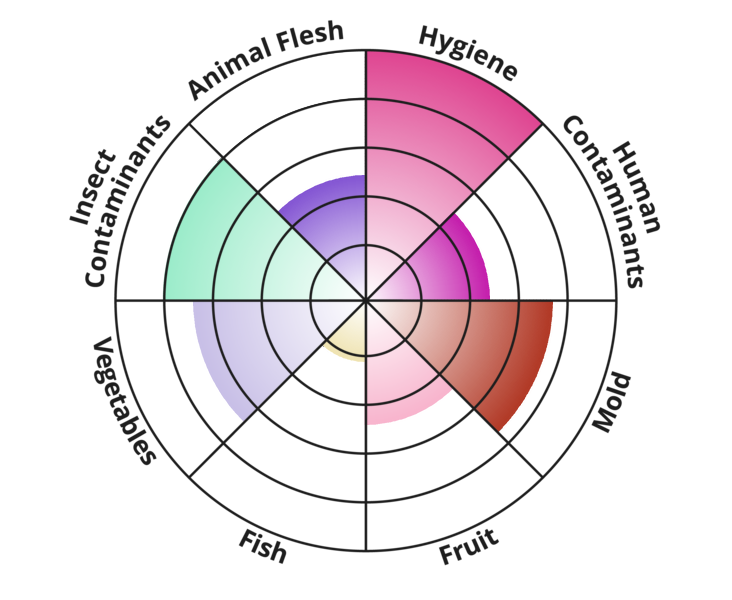Food Disgust Test
You are here because one of your friends linked you to their Food Disgust Test result:
Take the TestResults:

Your friend's food disgust is elevated (62.5%).
Take the TestExplanation of Triggers:
Animal Flesh denotes the tendency to experience disgust at raw meat or the less commonly eaten parts of animals (such as organs, jaws, etc.). This disgust may also extend to other impressions related to animal flesh, such as the odors of frying or cooking meat or seeing the parts of animals that remind a person that they resemble us (such as faces, feet, eyes, etc.). Of all the food disgust triggers, Animal Flesh is thought to have the most cultural basis, and many vegans and vegetarians report increased disgust on this parameter after adopting these diets.
Hygiene is the inclination to feel disgusted when the sanitary conditions regarding one’s food intake are not ideal. Such people may lose their appetite when unsanitary conditions are experienced in relation to their food preparation or eating. For example, they may be grossed out when they notice stains on their utensils, when they are given a blemished plate, and so on. High disgust related to non-ideal hygiene may reduce the risk of infection, but some research also suggests that it may increase one’s risk of autoimmune disease.
Human Contamination is the tendency to experience disgust from their food’s exposure to human contaminants such as the shared use of cutlery or the prospect of sharing food with others. People high in this trait may feel disgusted when others have touched their food or drink. While this disposition was probably unknown in prehistory, feelings of disgust at sharing food with others may protect us from toxins or bacteria entering our food through that route.
Mold denotes sensitivity to mold in relation to foodstuffs, including mold that has been removed. People high in this trait may experience disgust and nausea at merely the prospect of eating something from which the mold was cut off or at molds that are produced under controlled circumstances to elevate the taste of the foodstuff in question.
Decaying Fruit is the tendency to feel disgusted by fruits that are overripe and/or to be grossed out when one discovers that the color and/or texture of fruit has changed. For instance, some may not want to eat fruits that have black or brown spots or that are unusually soft to the touch. This kind of disgust is thought to have originated from the human instinct to avoid rancid or decomposing foodstuffs.
Fish is food disgust sensitivity related to the texture and smell of fish. People high in this trait may feel nauseous when they smell fish or eat raw fish meat. This type of disgust is thought to have developed as a response to the challenges of keeping fish meat fresh in prehistoric societies. Inland populations may also have had a hard time learning to trust fish meat as a source of nutrition.
Decaying Vegetables denotes the tendency to be disgusted by overripe vegetables or vegetables whose texture and/or peel has changed through, for example, discoloration, scratches, or pressure marks. This kind of repugnance is thought to have originated from the human instinct to avoid eating anything that has gone bad. Disgust concerning vegetables has been observed to originate in childhood, and it is often difficult to change later in life.
Insect Contaminants is the inclination to feel disgusted when worms, bugs, and/or insects are associated with food preparation or eating, or even by just seeing an insect near food. This type of disgust is thought to have developed as a disease avoidance measure that may reduce the risk of infection.
References
- Ammann, J., Hartmann, C., & Siegrist, M. (2018). Development and validation of the food disgust picture scale. Appetite.
- Garcia-Gomez, L., et al. (2020). Food disgust scale: Spanish version. Frontiers in Psychology.
- Hartmann, Christina & Siegrist, Michael. (2017). Development and validation of the Food Disgust Scale. Food Quality and Preference.
Take Next
GET THE FULL STORY
Become a lifetime member with a one-time payment
WHAT YOU GET
Access to members-only tests
Ability to track and save test results
Access to all of our eBooks (value $44.94)
Access to premium type assessments and infographics
Become a memberSave and monitor your results over time
Become a member today
Sign Up











